Frontiers Communications
Editor
Editor

Frontiers news
08 Nov 2015
Multiple adaptations to polar and alpine environments within cyanobacteria: a phylogenomic and Bayesian approach Nathan A. M. Chrismas, Alexandre M. Anesio and Patricia Sanchez-Baracaldo* Genome reconstructions indicate the partitioning of ecological functions inside a phytoplankton bloom in the Amundsen Sea, Antarctica Tom O. Delmont, A. Murat Eren, Joseph H. Vineis and Anton F. Post* Cross-biome comparison of microbial association networks Karoline Faust, Gipsi Lima-Mendez, Jean-Sébastien Lerat, Jarupon F. Sathirapongsasuti, Rob Knight, Curtis Huttenhower, Tom Lenaerts and Jeroen Raes* Metabolic functions of Pseudomonas fluorescens strains from Populus deltoides depend on rhizosphere or endosphere isolation compartment Collin M. Timm, Alisha G. Campbell, Sagar M. Utturkar, Se-Ran Jun, Rebecca E. Parales, Watumesa A. Tan, Michael S. Robeson, Tse-Yuan S. Lu, Sara Jawdy, Steven D. Brown, David W. Ussery, Christopher W. Schadt, Gerald A. Tuskan, Mitchel J. Doktycz, David J. Weston and Dale A. Pelletier* Diversity and functions of volatile organic compounds produced by Streptomyces from a disease-suppressive soil Viviane Cordovez, Victor J. Carrion, Desalegn W. Etalo, Roland Mumm, Hua Zhu, Gilles P. van Wezel and Jos M. Raaijmakers* Heterologous xylose isomerase pathway and evolutionary engineering improve xylose utilization in Saccharomyces cerevisiae Xin Qi, Jian Zha, Gao-Gang Liu, Weiwen Zhang, Bing-Zhi Li* and Ying-Jin Yuan FvBck1, a component of cell wall […]
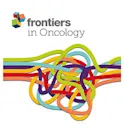
Frontiers news
07 Nov 2015
Misfolded N-CoR is linked to the ectopic reactivation of CD34/Flt3-based stem-cell phenotype in promyelocytic and monocytic acute myeloid leukemia Dawn Sijin Nin, Li Feng, Sridevi Visvanathan and Matiullah Khan* Treatment plan technique and quality for single-isocenter stereotactic ablative radiotherapy of multiple lung lesions with volumetric modulated arc therapy or intensity-modulated radiosurgery Kimmen Quan, Karen M. Xu, Ron Lalonde, Zachary D. Horne, Mark E. Bernard, Chuck McCoy, David A. Clump, Steven A. Burton and Dwight E. Heron* Decreased RXRα is associated with increased β-catenin/TCF4 in 56-Fe-induced intestinal tumors Shubhankar Suman, Santosh Kumar, Albert J. Fornace Jr. and Kamal Datta* Association between CLN3 (neuronal ceroid lipofuscinosis, CLN3 type) gene expression and clinical characteristics of breast cancer patients Joelle Makoukji, Mohamad Raad, Katia Genadry, Sally El-Sitt, Nadine J. Makhoul, Ehab Saad Aldin, Eden Nohra, Mark Jabbour, Ajanthah Sangaralingam, Claude Chelala, Robert H. Habib, Fouad Boulos, Arafat Tfayli and Rose-Mary Boustany* Structural characterization of mucin O-glycosylation may provide important information to help prevent colorectal tumor recurrence Adriana Mihalache, Jean-François Delplanque, Bélinda Ringot Destrez, Cindy Wavelet, Pierre Gosset, Bertrand Nunes, Sophie Groux-Degroote, Renaud Léonard and Catherine Robbe-Masselot* Biological effectiveness of accelerated protons for chromosome exchanges Kerry A. George*, Megumi Hada and Francis A. Cucinotta Immuno-stimulation by OX40 ligand transgenic Ewing […]
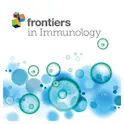
Frontiers news
07 Nov 2015
In-depth assessment of within-individual and inter-individual variation in the B cell receptor repertoire Jacob D. Galson*, Johannes Trück, Anna Fowler, Márton Münz, Vincenzo Cerundolo, Andrew J. Pollard, Gerton Lunter and Dominic F. Kelly Real-time imaging of resident T cells in human lung and ovarian carcinomas reveals how different tumor microenvironments control T lymphocyte migration Houcine Bougherara, Audrey Mansuet-Lupo, Marco Alifano, Charlotte Ngô, Diane Damotte, Marie-Aude Le Frère-Belda, Emmanuel Donnadieu* and Elisa Peranzoni Polyclonal expansion of NKG2C+ NK cells in TAP-deficient patients Vivien Beziat, Marwan Sleiman, Jodie P. Goodridge, Mari Kaarbo, Lisa L. Liu, Halvor Rollag, Hans-Gustaf Ljunggren, Jacques Zimmer and Karl-Johan Malmberg* Extensive T-cell epitope repertoire sharing among human proteome, gastrointestinal microbiome, and pathogenic bacteria: implications for the definition of self Robert D. Bremel* and E. Jane Homan Dysfunctional Crohn’s disease-associated NOD2 polymorphisms cannot be reliably predicted on the basis of RIPK2-binding or membrane association Rhiannon Parkhouse and Tom P. Monie* HLA preferences for conserved epitopes: a potential mechanism for hepatitis C clearance Xiangyu Rao, Ilka Hoof, Debbie van Baarle, Can Keşmir and Johannes Textor* Effector and central memory poly-functional CD4+ and CD8+ T cells are boosted upon ZOSTAVAX® Vaccination Janet J. Sei, Kara S. Cox, Sheri A. Dubey, Joseph M. Antonello, David L. Krah, Danilo R. Casimiro […]
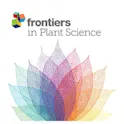
Frontiers news
06 Nov 2015
Ecogeography and utility to plant breeding of the crop wild relatives of sunflower (Helianthus annuus L.) Michael B. Kantar*, Chrystian C. Sosa, Colin K. Khoury, Nora P. Castañeda-Álvarez, Harold A. Achicanoy, Vivian Bernau, Nolan C. Kane, Laura Marek, Gerald Seiler and Loren Rieseberg Landscape genomics reveal signatures of local adaptation in barley (Hordeum vulgare L.) Tiegist D. Abebe, Ali A. Naz* and Jens Léon Genome-wide analysis of the CaHsp20 gene family in pepper: comprehensive sequence and expression profile analysis under heat stress Meng Guo, Jin-Hong Liu, Jin-Ping Lu, Yu-Fei Zhai, Hu Wang, Zhen-Hui Gong*, Shu-Bin Wang* and Ming-Hui Lu* Plant-derived SAC domain of PAR-4 (Prostate Apoptosis Response 4) exhibits growth inhibitory effects in prostate cancer cells Shayan Sarkar, Sumeet Jain, Vineeta Rai, Dipak K. Sahoo, Sumita Raha, Sujit Suklabaidya, Shantibhushan Senapati, Vivek M. Rangnekar, Indu B. Maiti* and Nrisingha Dey* Impact of high temperature stress on floret fertility and individual grain weight of grain sorghum: sensitive stages and thresholds for temperature and duration P. V. V. Prasad*, Maduraimuthu Djanaguiraman, Ramasamy Perumal and Ignacio A. Ciampitti Genome-wide DNA methylation profiling by modified reduced representation bisulfite sequencing in Brassica rapa suggests that epigenetic modifications play a key role in polyploid genome evolution Xun Chen, Xianhong Ge*, Jing Wang, Chen Tan, […]

Impact analysis
05 Nov 2015
By Pascal Rocha da Silva, Frontiers analyst The field of Frontiers in Neuroscience, established in 2008, has become the #1 most cited and #1 largest Open Access publisher of Neuroscience and the 3rd most cited and 4th largest Neuroscience publisher overall. The impact factor (IF), defined as the total number of citations divided by the number of citable articles over a two-year period, is the gold standard of journal quality (not of an individual scientist). It was formally established by the Institute for Scientific Information (ISI) in 1975. As the IF can be heavily skewed by a few highly cited papers, total citations generated over the same two-year period provide a more accurate measure of the overall influence or impact of the articles published by a journal in a field. Analysis within the JCR category of Neuroscience There are 252 journals listed within the category of “Neurosciences” in the 2014 Journal Citation Reports (JCR), provided by Thomson Reuters in 2015. There are 36 Gold Open Access journals indexed in the 2014 JCR. Frontiers is structured by academic fields (e.g. Neuroscience, Psychology, Plant Science, etc.) with specialty sections (e.g. Developmental Psychology). In the case of the field of Frontiers in Neuroscience, […]
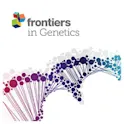
Frontiers news
05 Nov 2015
Sorbitol treatment extends lifespan and induces the osmotic stress response in Caenorhabditis elegans Devon Chandler-Brown, Haeri Choi, Shirley Park, Billie R. Ocampo, Shiwen Chen, Anna Le, George L. Sutphin, Lara S. Shamieh, Erica D. Smith and Matt Kaeberlein* Genetic markers as a predictive tool based on statistics in medical practice: ethical considerations through the analysis of the use of HLA-B*27 in rheumatology in France Hélène Colineaux*, Adeline Ruyssen-Witrand and Anne Cambon-Thomsen Association of SLC2A9 genotype with phenotypic variability of serum urate in pre-menopausal women Ruth K. Topless, Tanya J. Flynn, Murray Cadzow, Lisa K. Stamp, Nicola Dalbeth, Michael A. Black and Tony R. Merriman* Phenotypic variance explained by local ancestry in admixed African Americans Daniel Shriner, Amy R. Bentley, Ayo P. Doumatey, Guanjie Chen, Jie Zhou, Adebowale Adeyemo and Charles N. Rotimi* Cryptic relatedness in epidemiologic collections accessed for genetic association studies: experiences from the Epidemiologic Architecture for Genes Linked to Environment (EAGLE) study and the National Health and Nutrition Examination Survey Jennifer Malinowski, Robert Goodloe, Kristin Brown-Gentry and Dana C. Crawford* Mechanisms of mutational robustness in transcriptional regulation Joshua L. Payne* and Andreas Wagner Moving from capstones towards cornerstones: successes and challenges in applying systems biology to identify […]

Impact analysis
04 Nov 2015
Frontiers in Pharmacology was launched in 2010. In just 4 years, it has become the 3rd largest and the 2nd most cited open access journal in Pharmacology & Pharmacy. The Impact Factor (IF), defined as the total number of citations in a given year divided by the number of citable articles over the previous two-year period, is the most commonly accepted metric of journal quality (but not of an individual paper or researcher). It was formally established by the Institute for Scientific Information (ISI) in 1975. As the IF can be heavily skewed by a few highly-cited papers, total citations generated over the same two-year period provide a more accurate indication of the overall influence or impact of the articles published by a journal in a field. Frontiers is a pioneer in the use of article-level and author-level metrics and encourages every author to use these to track the development of his or her readership on a more granular level. Analysis within the category of Pharmacology There are 255 journals listed in the category of Pharmacology in the 2014 Journal Citation Reports (JCR) provided by Thomson Reuters in 2015. Frontiers in Pharmacology is one of the 23 Gold open-access journals. Below are the results of our comparative analysis of these journals on the article […]

Psychology
04 Nov 2015
Many of us love a good mystery, but the mystery Professor Axel Cleeremans is trying to solve is one of the last remaining mysteries of the mind.

Impact analysis
03 Nov 2015
By Pascal Rocha da Silva, Frontiers analyst Frontiers in Psychology was launched in 2010. In just 4 years, it has become the largest and the 2nd most-cited psychology journal in the world . The Impact Factor (IF), defined as the total number of citations in a given year divided by the number of citable articles over the previous two-year period, is the most commonly accepted metric of journal quality (but not of an individual paper or researcher). It was formally established by the Institute for Scientific Information (ISI) in 1975. As the IF can be heavily skewed by a few highly-cited papers, total citations generated over the same two-year period provide a more accurate indication of the overall influence or impact of the articles published by a journal in a field. Frontiers is a pioneer in the use of article-level and author-level metrics and encourages every author to use these to track the development of his or her readership on a more granular level. Analysis within the category of Psychology There are 597 journals listed in the category of Psychology in the 2014 Journal Citations Reports (JCR) provided by Thomson Reuters in 2015. Frontiers in Psychology is one of the 19 Gold open-access journals. Below, the results of our comparative […]
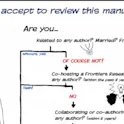
Open science and peer review
03 Nov 2015
By Chloe Schmidt and Katherine Lawson You’ve just received an invitation to review a manuscript. Coincidentally, your expertise matches perfectly with its content! But before you go ahead and accept the invitation, there are a few other things to consider: for one, is there something that could interfere with your objectivity as a reviewer? For that matter, what’s considered a conflict of interest at Frontiers? Here’s a fun flowchart to help clarify whether you, as a reviewer, have any potential conflicts of interest with the authors (or editor) of a manuscript. If you find yourself in a situation where you answer yes to any of the questions below, do us a favor and drop the Editorial Office an email. Otherwise, happy reviewing!

Frontiers news
03 Nov 2015
Loop, the research network powered by Frontiers, has collaborated with the Center of Support for Technological Innovation (CAIT) of the Technical University of Madrid to launch actúaLoop – a competition for entrepreneurs and technical teams. The competition’s goal is to develop ideas which utilize Loop’s APIs by creating innovative applications around the academic and publishing industry. The teams with the 10 best ideas will have the chance to further develop their concept during an incubation phase. Participants can have access to business angels, potential job opportunities in an exciting multinational environment and a 5000€ cash prize for the winning team. “This is a great opportunity for aspiring entrepreneurs to develop something that the academic world has been asking for,” said Chantelle Rijs, Loop Project Lead at Frontiers. “We’re excited to be collaborating with CAIT and UPM on this competition and can’t wait to work with the teams.” Frontiers’ award-winning IT team will be providing mentorship along the way to help the university teams develop their ideas, providing them real-world experience and the chance to see their idea move from concept into reality. To participate in the competition, candidates must submit their ideas before January 7, 2016. The ideas should be […]

Impact analysis
03 Nov 2015
By Pascal Rocha da Silva, Frontiers analyst Frontiers in Physiology was launched in 2010. In just 4 years, it has become the second largest and the 4th most cited Physiology journal in the world. The impact factor (IF), defined as the total number of citations divided by the number of citable articles over a two-year period, is the gold standard of journal quality (not of an individual scientist). It was formally established by the Institute for Scientific Information (ISI) in 1975. As the IF can be heavily skewed by a few highly-cited papers, total citations generated over the same two-year period provide a more accurate measure of the overall influence or impact of the articles published by a journal in a field. Analysis within the category of Physiology There are 83 journals listed in the category of Physiology in the 2014 Journal Citations Reports (JCR) provided by Thomson Reuters in 2015. Frontiers in Physiology is one of the 10 Gold open-access journals. Below, the results of our comparative analysis on the article volume published, impact factor (IF) achieved, and the total number of citations accumulated in 2014 based on articles published over the two preceding years, 2012 and 2013. (Click here to see the volume and number of citations of other Frontiers journals). Comparison […]

Frontiers news
02 Nov 2015
Frontiers in Neurology has been selected for inclusion in the 2015 Thomson Reuters Journal Citation Reports and will receive its first impact factor in 2016.

Frontiers news
02 Nov 2015
In just 5 years, Frontiers in Plant Science has become the 3rd largest and the 7th most-cited Plant Science journal in the world. The Impact Factor (IF), defined as the total number of citations in a given year divided by the number of citable articles over the previous two-year period, is the most commonly accepted metric of journal quality (but not of an individual paper or researcher). It was formally established by the Institute for Scientific Information (ISI) in 1975. As the IF can be heavily skewed by a few highly-cited papers, total citations generated over the same two-year period provide a more accurate indication of the overall influence or impact of the articles published by a journal in a field. Frontiers is a pioneer in the use of article-level and author-level metrics and encourages every author to use these to track the development of his or her readership on a more granular level. Analysis within the category of Plant Sciences There are 204 journals are listed in the category of “Plant Sciences” in the 2014 Journal Citation Reports (JCR) published by Thomson Reuters in 2015. Frontiers in Plant Science is one of 33 Gold open-access journals. Below are the results of our comparative analysis of these journals on the article volume published, impact […]

Frontiers news
02 Nov 2015
By Pascal Rocha da Silva, Frontiers analyst Frontiers in Human Neuroscience was launched in 2008. In just 6 years, it has become the #1 most-cited journal in psychology, the #1 most-cited open access journal dedicated to neuroscience and the 10th most-cited journal in all of neuroscience. It is also the 2nd and 3rd largest journal in all of psychology and neuroscience, respectively. The Impact Factor (IF), defined as the total number of citations in a given year divided by the number of citable articles over the previous two-year period, is the most commonly accepted metric of journal quality (but not of an individual paper or researcher). It was formally established by the Institute for Scientific Information (ISI) in 1975. As the IF can be heavily skewed by a few highly-cited papers, total citations generated over the same two-year period provide a more accurate indication of the overall influence or impact of the articles published by a journal in a field. Frontiers is a pioneer in the use of article-level and author-level metrics and encourages every author to use these to track the development of his or her readership on a more granular level. Analysis within the categories of Neuroscience and Psychology There are 252 journals listed in the category of Neurosciences in the […]
Get the latest research updates, subscribe to our newsletter